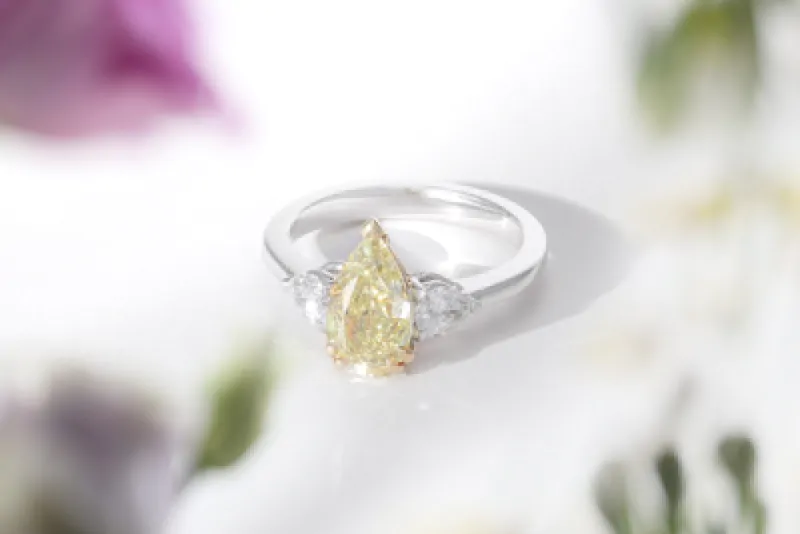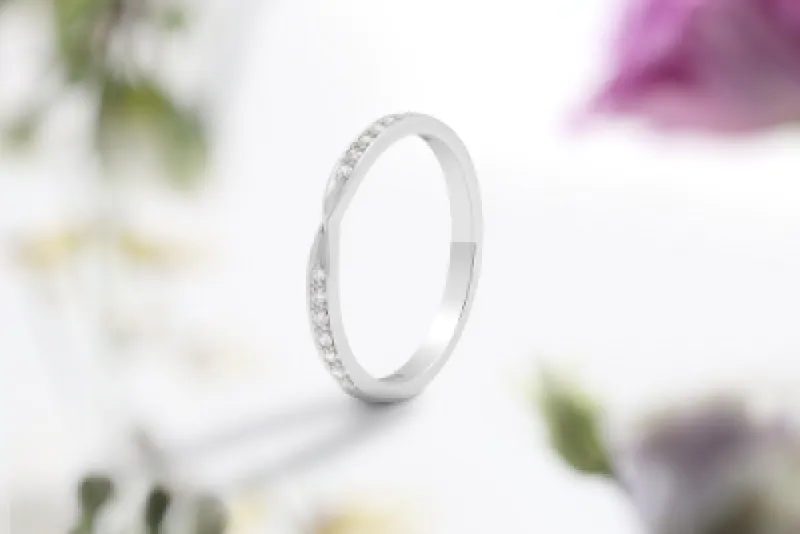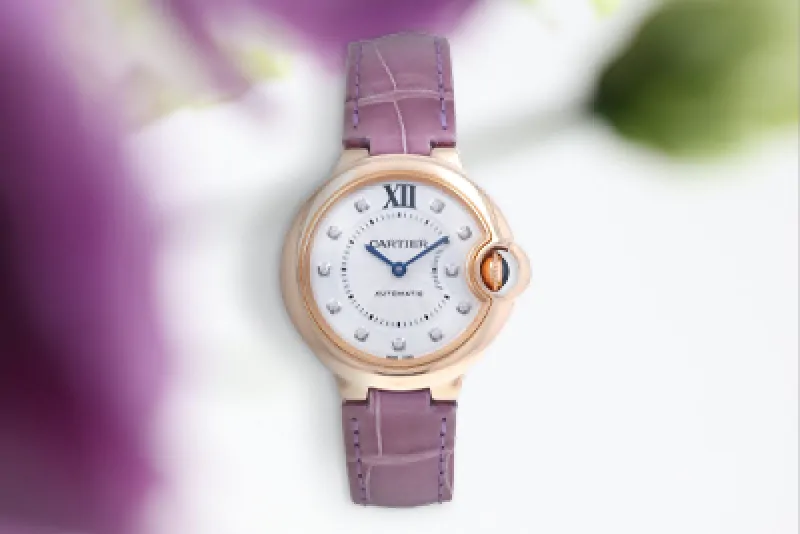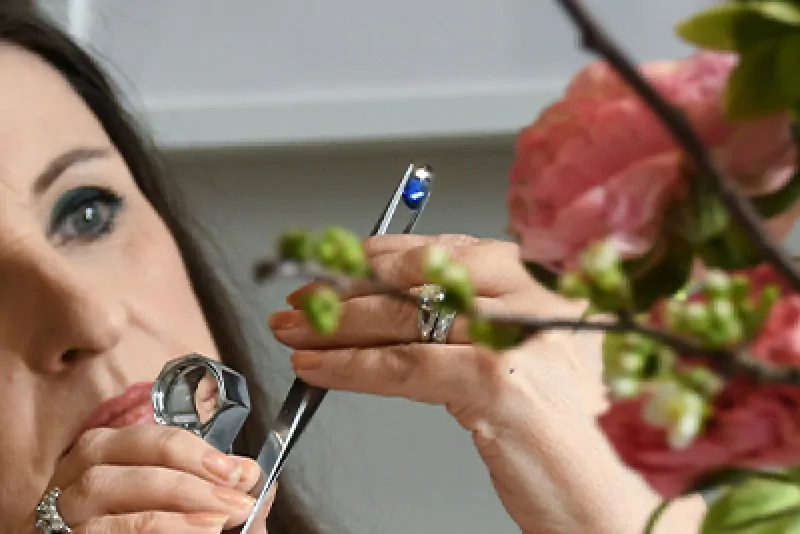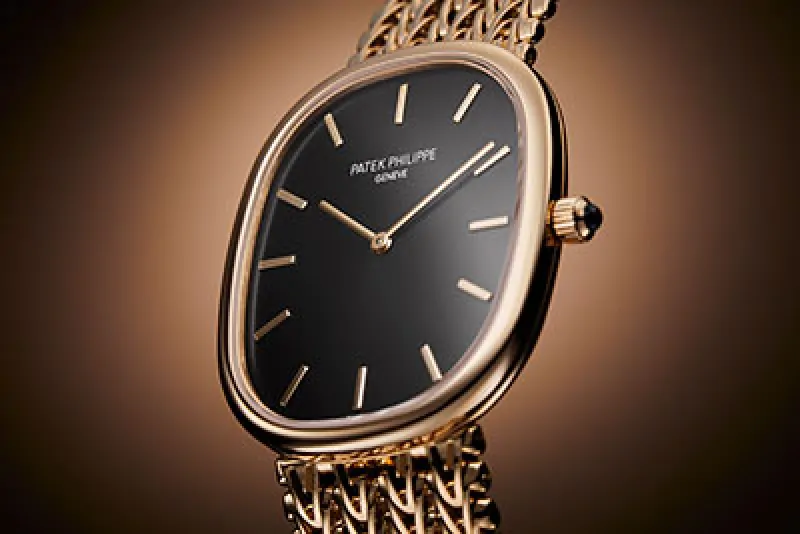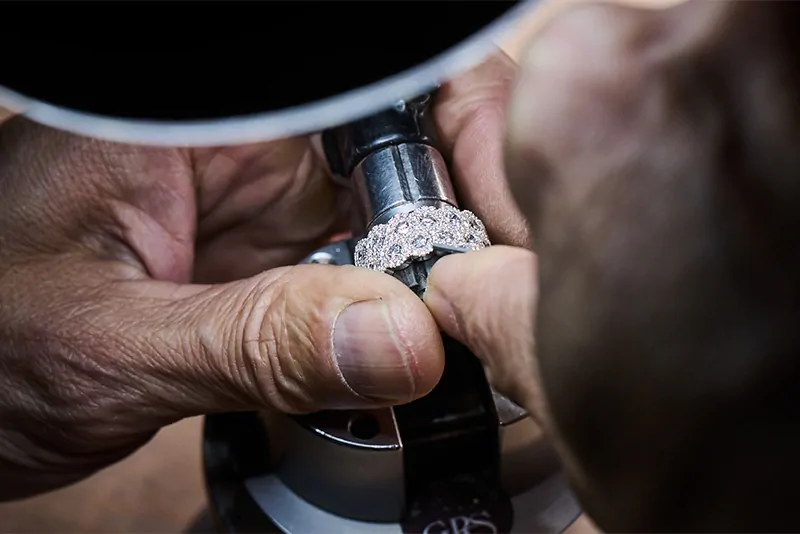The Laings Journal


Founded in 1839, Patek Philippe set a lasting precedence in its commitment to rare handcrafts, keeping alive a broad palette of honoured artisanal traditions including manual engraving, enamelling, guilloché, wood micromarquetry and hand gemsetting. Read on to discover the Stern family’s unique commitment to rare handcrafts past, present and future.
Marquetry
Marquetry – while a historical technique – is a relatively recent phenomena in the art of watchmaking. The meticulous and precise technique sees the artisan cut, assemble and apply a choice of different woods in a variety of colours. Drawing inspiration from different landscapes and silhouettes, the marquetry expert uses a line drawing to begin to bring their vision to life, cutting out the contours in wood to then craft their creation.
This new type of marquetry for watch dials was introduced by Patek Philippe almost by chance, when a commissioned presentation box sparked intrigue and rose the question of whether this could be applied on a smaller scale. Rising to the challenge, the marquetry expert was able to produce the first watch decorated with the enchanting technique – the Black Crowned Cranes of Kenya pocket watch, Ref. 982/115 in 2008.

Gemsetting
Where watchmaking becomes haute horology, setting of gemstones in a Patek Philippe timepiece is a delicate art, decorating each watch with the finest precious stones, adorning the bracelet, dial, lugs, case and bezel.
The gemsetting on each Patek Philippe Rare Handcrafts piece is entirely hand-crafted by the gemsetter, who ensures the stones are arranged to showcase their inherent fire and brilliance and create remarkable displays of vivacity.
While decorating each precious timepiece with gemstones, Patek Philippe gemsetters must adjust to the constraints of fine watchmaking such as ultra-thin movements, new and unusual alloys and parts of the watch decorated with other traditional techniques. This is achieved through various gemsetting techniques such as snow setting, invisible setting, pavé grain and grain setting.
The Gondolo Serata Ref. 4962/200R-001, a jewellery watch from the current Patek Philippe collection, beautifully showcases the art of gemsetting. Set with spessartites arranged in a double colour gradient, highlighting the case’s refined curves.
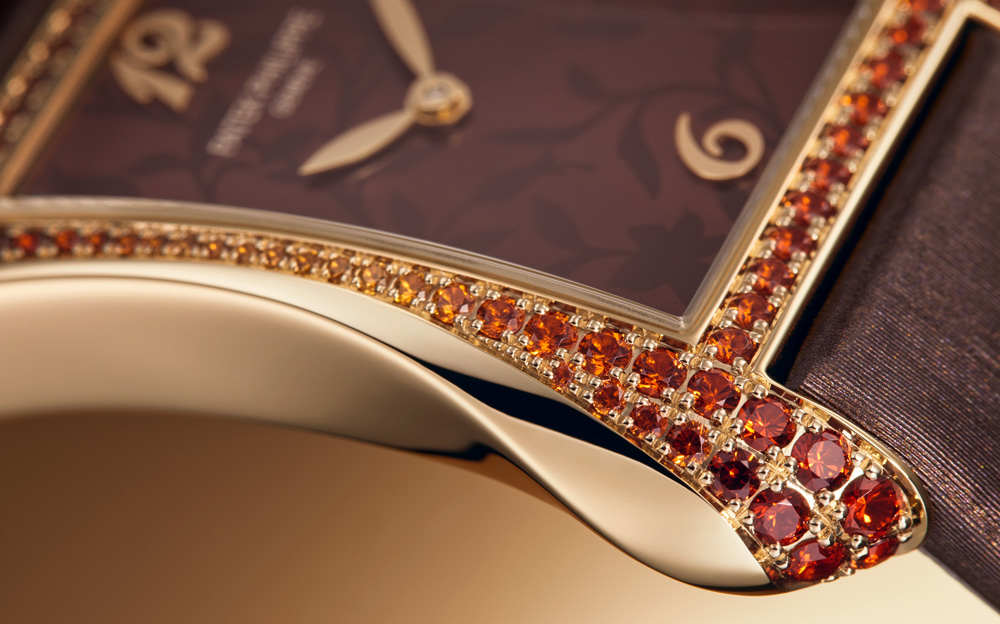
Guilloché
The age-old technique of hand-guilloché is used to engrave straight or circular grooves only a few tenths of a millimetre thick and three to four hundredths of a millimetre deep. This delicate art creates the beautifully engraved patterns seen on dials, movements, cases and bracelets across the collections of Patek Philippe.
The art of guillochage thrived in watchmaking in the 19th century, but toward the end of the 20th century, it was at risk of becoming extinct along with the artisans who knew how to use the ancient machines. However, the demand for fine decorations and geometric patterns rose as the end of the millennium drew closer and so the remaining artisans were able to gift their knowledge to new craftspeople. Today, Patek Philippe keeps alive the once-fading art with artisans who carry a great love of the tradition.
The precious dial of the Ladies' Calatrava Ref. 4997/200G-001 from the current collection requires considerable work and artisanship. The base is exquisitely guilloched with concentric waves, then coated with consecutive layers of a translucent night blue lacquer, creating fascinating depths above which the hour markers and hands seem to float.
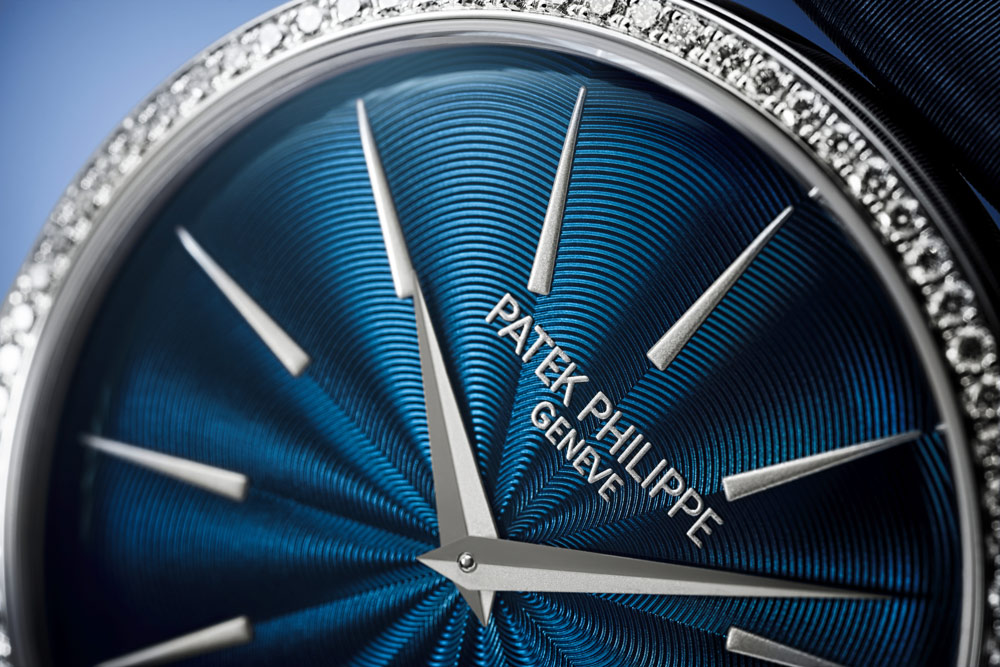
Enamel
The delicate art of enamelling on watch dials and cases became higher in demand in the seventeenth century and has continued to be a sought-after feature in many fine watches.
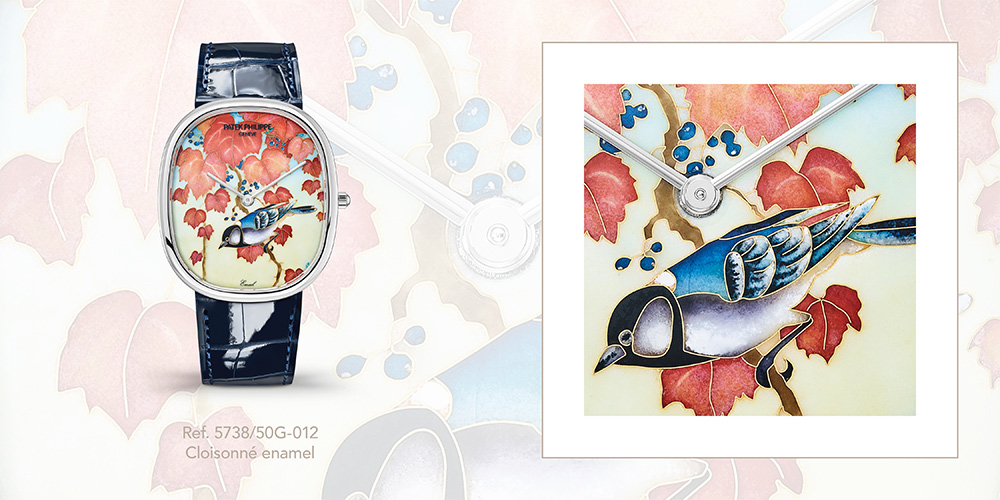
The enameller uses one of four traditional techniques, or perhaps a combination of the cloisonné technique, champlevé enamelling, paillonné enamelling and miniature painting on enamel. The magic of enamel happens in the furnace, where the material fuses with metal. Enamellers work like alchemist, mastering metal, colours and fire to create a breath-taking piece that will endure through the ages. This delicate skill has been preserved and nurtured by Patek Philippe.
Engraving
Hand-engraving is one of arts most delicate techniques and produces some of the most mesmerising decorations which dance with the light. To hand-engrave a Patek Philippe timepiece, the artisan must work under a binocular microscope at a scale requiring the greatest attention.
Engraving is carried out using a burin (graver) which sculpts the metal with great precision. As the engraver spends years fine-tuning their skills and mastering the technique of engraving, the burin becomes a natural extension of their hand. Engraving on a Patek Philippe watch is often used to enhance the beauty of another rare decoration, demonstrating the brand’s commitment to showcasing the finest skills and handcrafts there is.
The timeless design of the Golden Ellipse is combined with rare handcrafts, in the current collection Golden Ellipse Ref. 5738/51G-001, showcasing once more how the exceptional rare handcrafts exist today in Patek Philippe’s current collection.
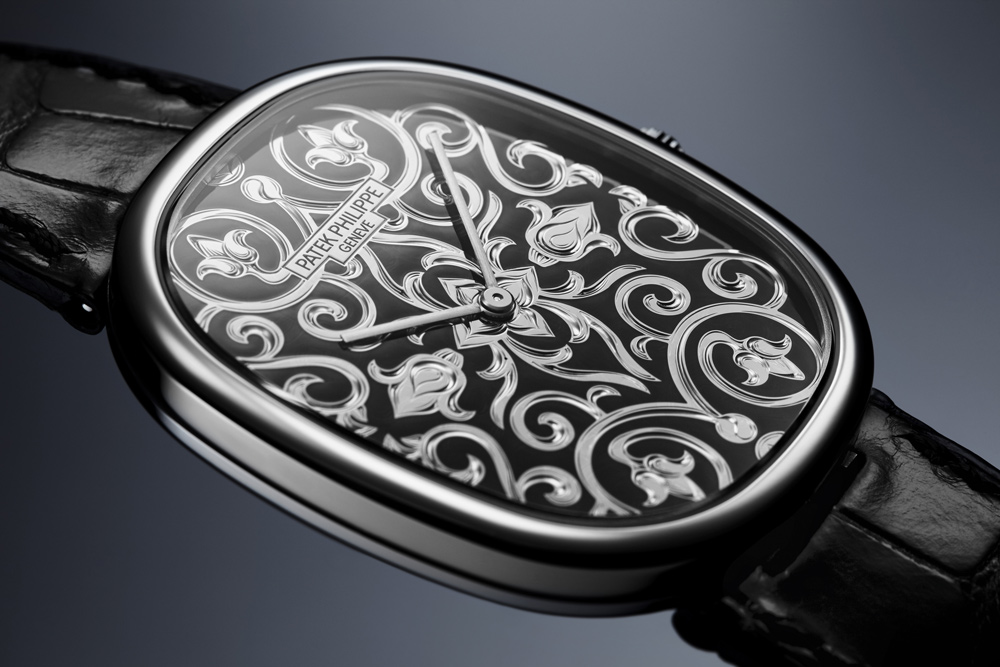
Discover the mastery of Patek Philippe at Laings where our experts are on-hand to guide you through the wondrous handcrafts and incredible collections. Visit the Glasgow, Southampton and Cardiff showrooms or contact our team online.

